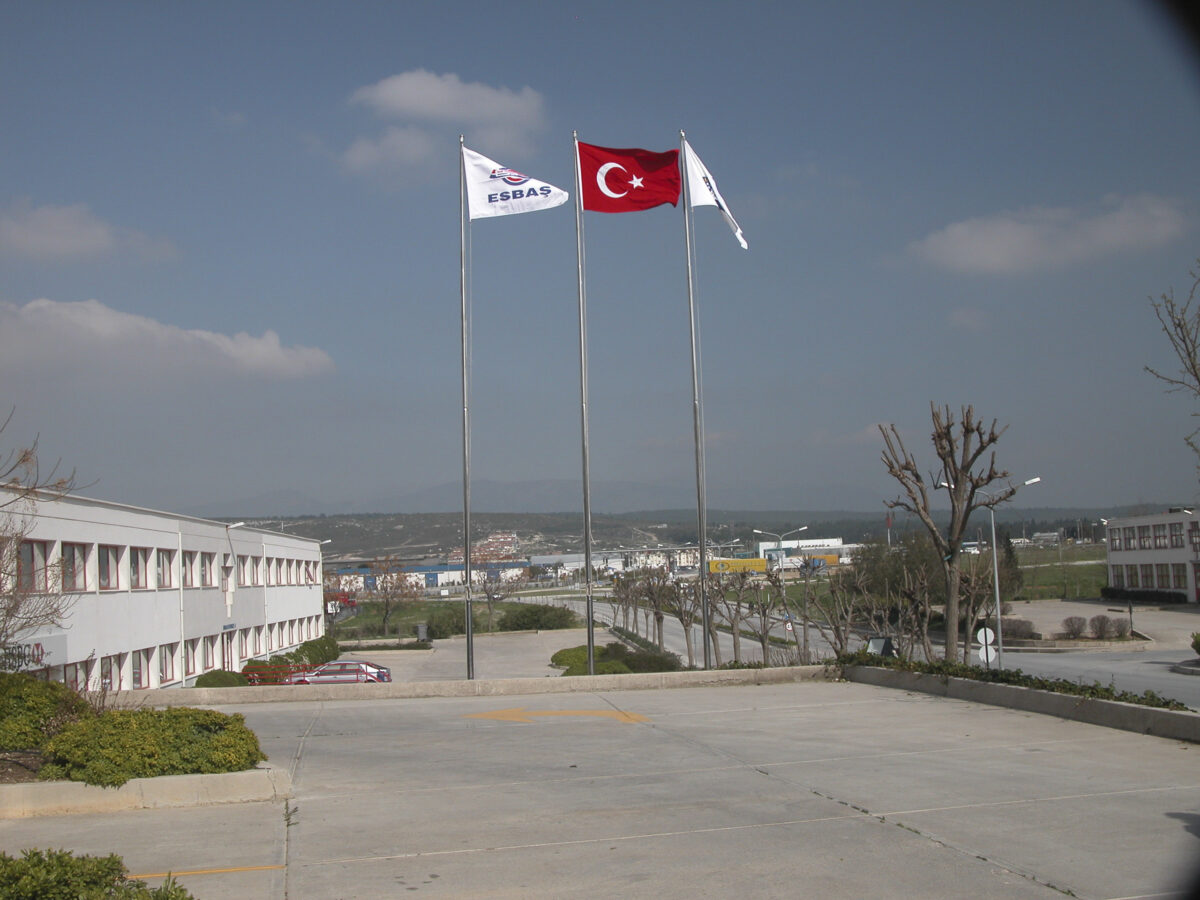Finishing our Space Camp tour by early afternoon, we spent the rest of the afternoon exploring the Aegean Free Zone.
Beginning in 1987, Turkey began to establish a number of Free Zones — sequestered industrial parks offering special regulatory privileges for participating enterprises, with the particular aim of promoting export-oriented investment and production. The prime mover behind the establishment of the Aegean Free Zone in 1990 was Kaya Tuncer, and ESBAŞ, the company which he founded, is its developer and operator. ESBAŞ claims a trade volume of over $4 billion annually and employs 21,000 persons. With his wife Mary, Kaya Tuncer was also the founder of Space Camp Turkey.
Time constraints permitted us to visit only two additional attractions in the Aegean Free Zone. One was a plant which manufactures blades for wind turbines; the other was Kaya Tuncer’s car collection.
The manufacture of blades for wind turbines is one of the largest enterprises in the Aegean Free Zone. It is technologically a highly sophisticated business, consistent with the Free Zone’s emphasis on high-tech industry – because high-tech means more added value than low-tech, and hence more profit, benefiting both the investors and the host government, which realizes increased tax revenue.
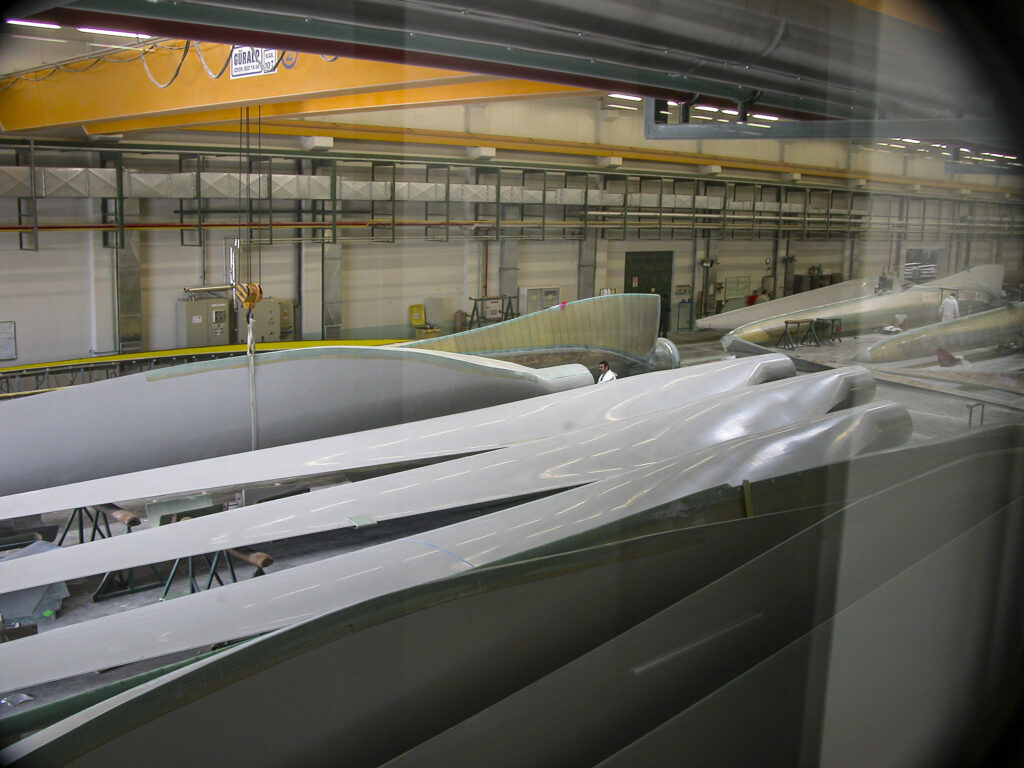
Wind turbine blades are enormous; you can get an idea of their size by checking out the tiny figure standing at the tip of one of the blades in the photo below.
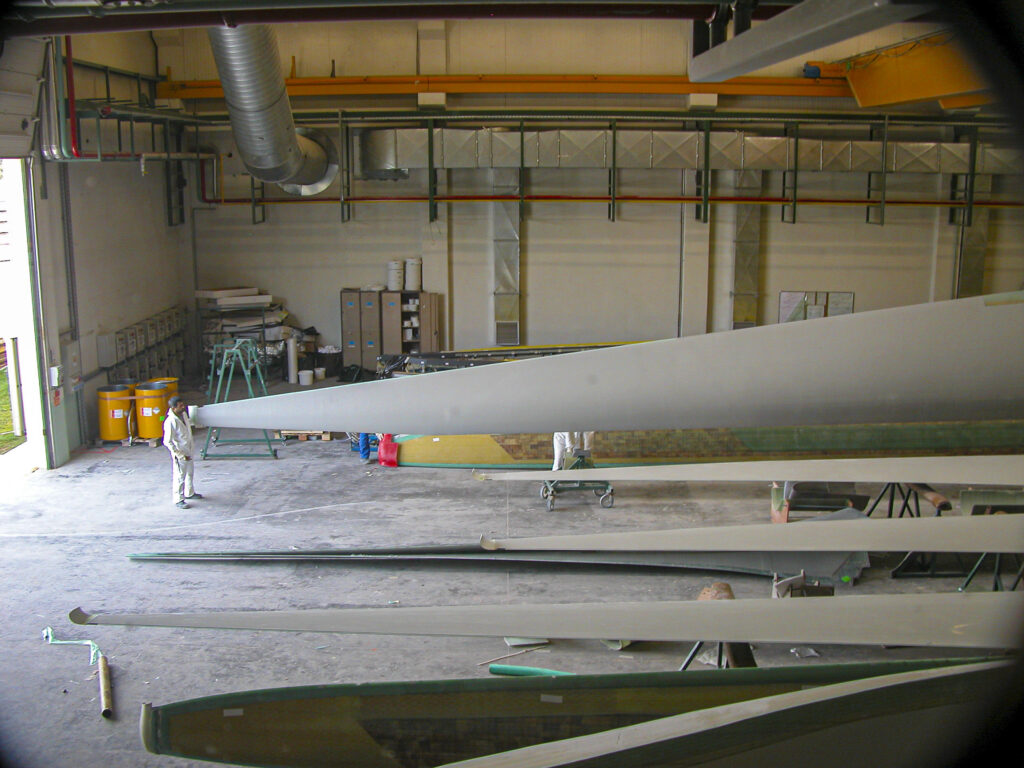
The interior of the turbine blade factory reminded me of the Douglas (now Boeing) Aircraft plant in Long Beach. After all, airplane wings and turbine blades are both airfoils, so the same technology is involved. Here we see the finished blades coming off the production line.
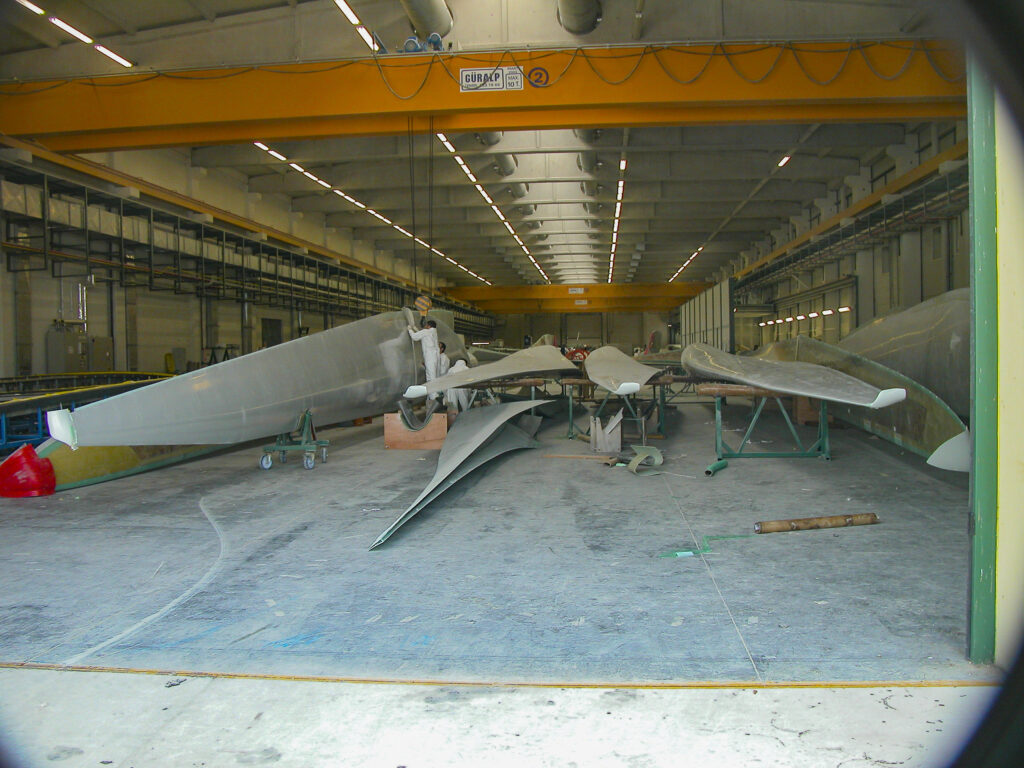
Giant cranes are required to move the turbine blades into and out of the storage area.
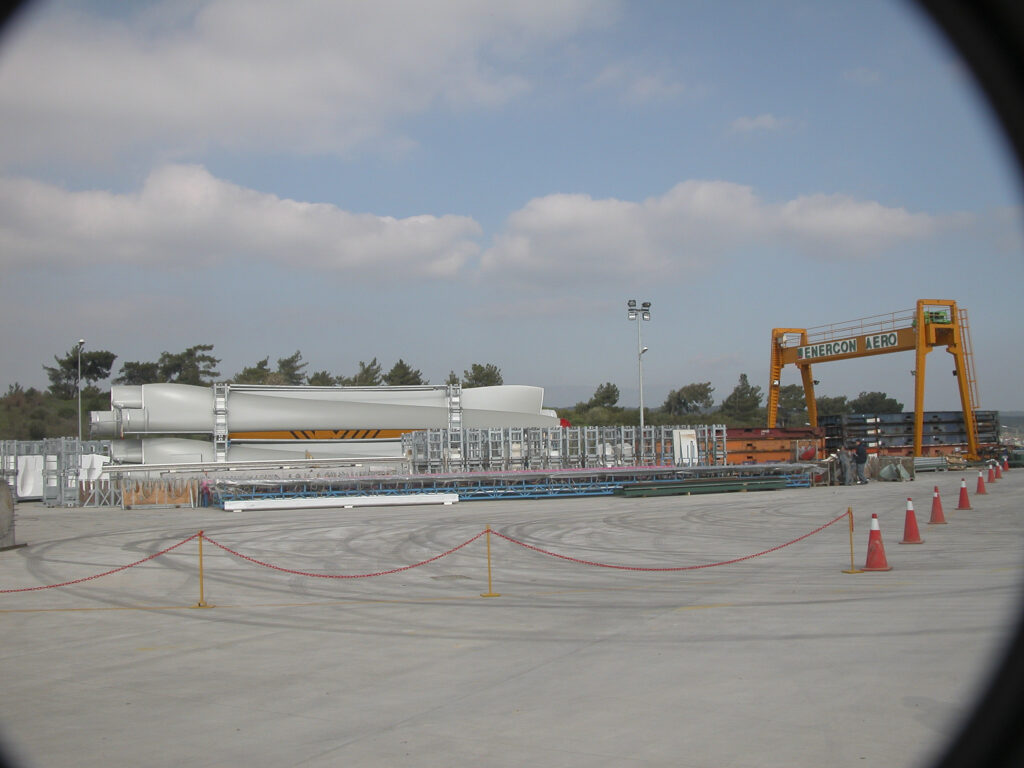
I wanted to get a shot of the turbine blades at the end where they attach to the rotor shaft. The blades in this picture appear to be of different types, but I wasn’t able to find out any of the specifics.
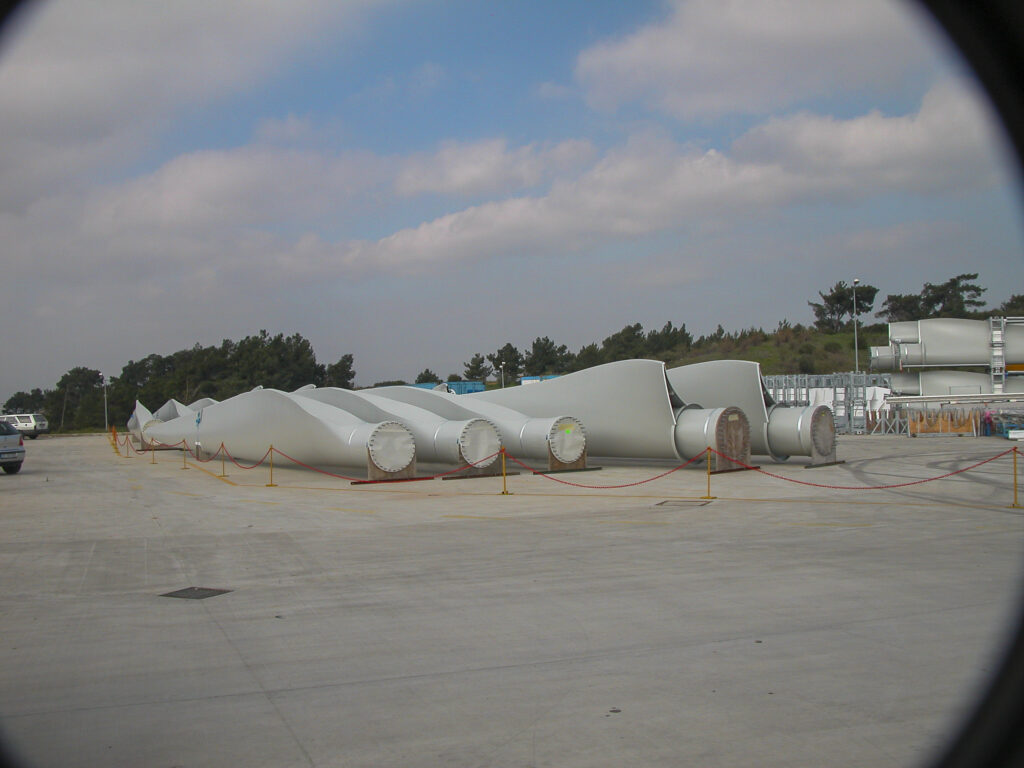
Kaya Tuncer’s car collection was not among the largest or most exotic that I’ve seen, but I found it great fun anyway. It seemed a little odd to go halfway around the world to see vintage American cars from the 20s and 30s, but it was gratifying to find that these old classics were valued and appreciated in Turkey as much as in the USA, if not more so.
The collection included an amazing array of early Fords, including the late-20s Model As shown below. The leftmost is a 1928 sedan, the middle one a 1928 truck, and the rightmost a 1930 convertible.
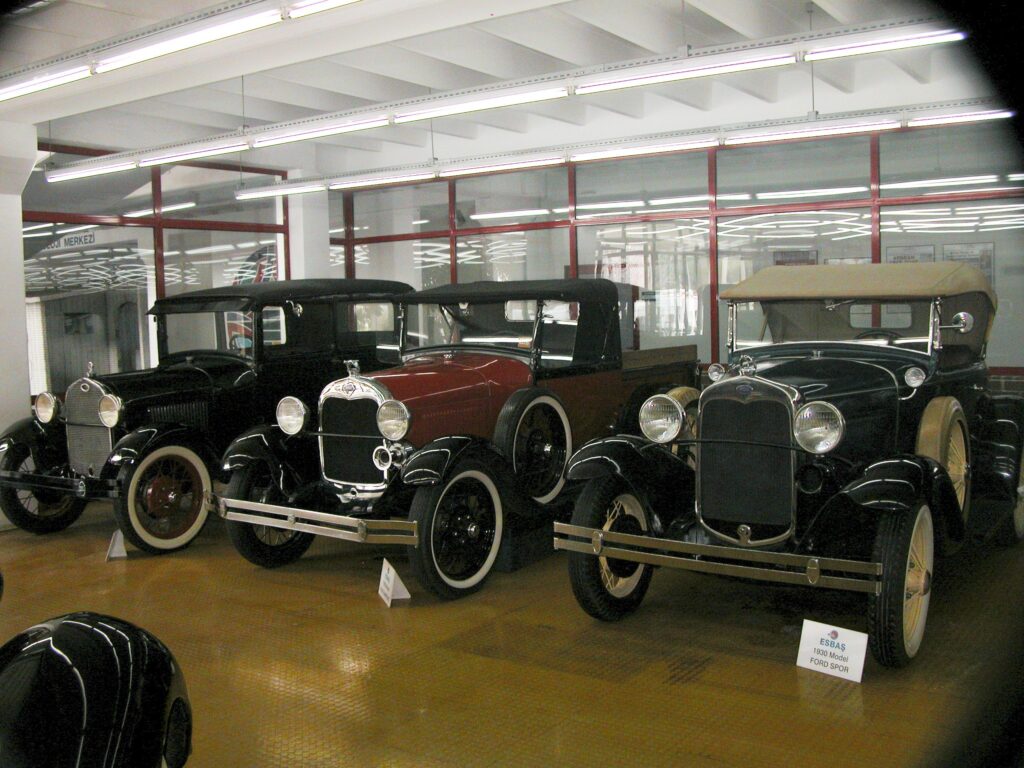
The placard for the Model A truck identified the model as a “Kamyonet,” which is a Turkified rendition of the French word “camionette,” which means “trucklet.” Quite appropriate. However, the model name listed for the convertible was “SPOR,” and I could only guess that this was meant to be “Sport.”
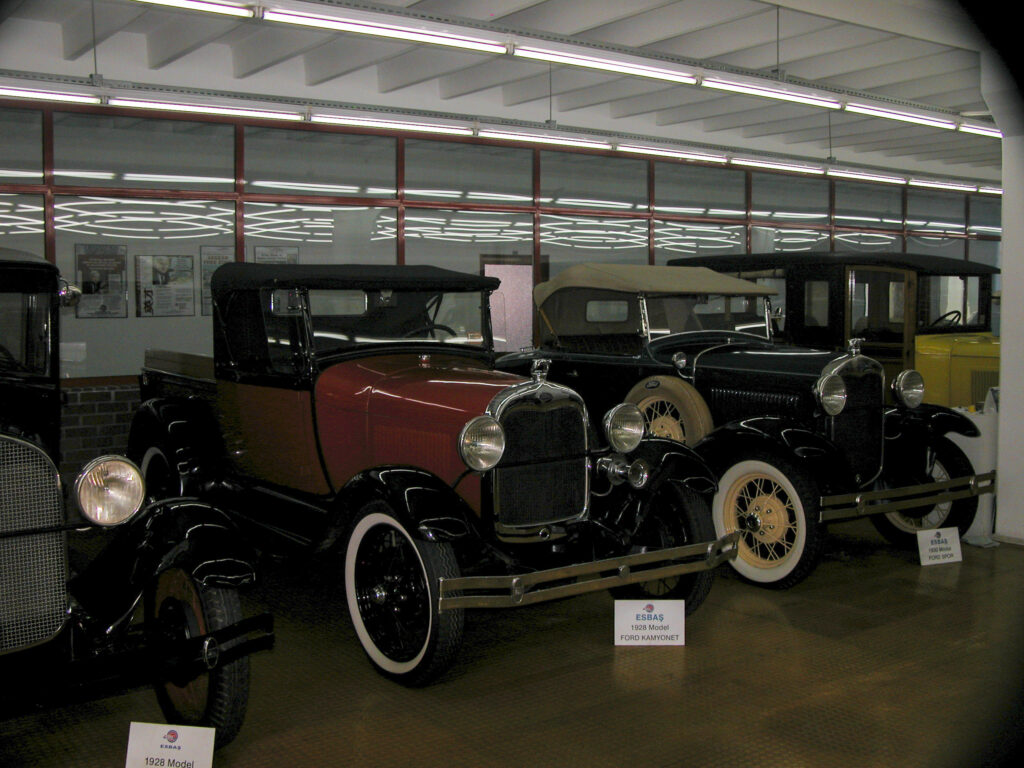
Another early Ford in the collection was a 1933 “Fayton” (Phaeton) convertible. When I was in high school in the 1950s, the 1932-34 Fords were the hot-rodders’ Holy Grail – I remember going around to car lots looking for them, but they were out of reach even then. The same was true for the Model As and Ts. I don’t think things have changed much since since then, except maybe that the later ’30s Fords, up through 1940, became equally sought-after. Hot rodders would kill to get these cars. I bet Mr. Tuncer shipped them to Turkey so that they wouldn’t get stolen.
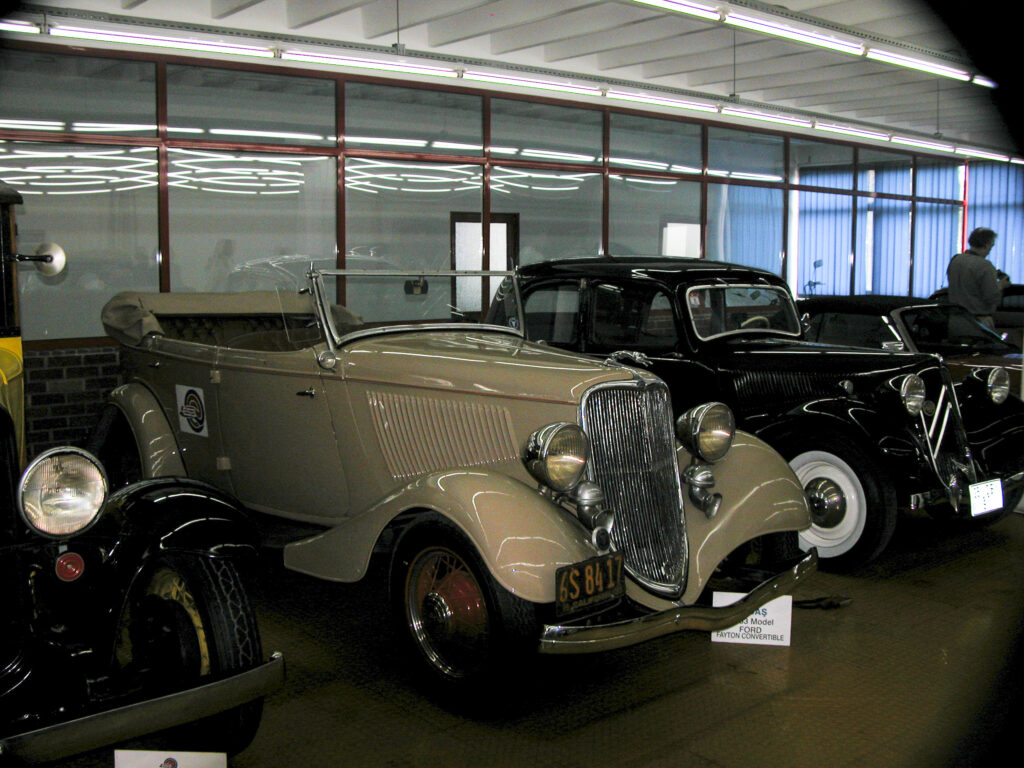
The early post-World-War II Ford lines, like this ’48 Mercury convertible, had nothing like the mystique of the prewar Fords; we considered them dowdy and ungainly, and they were assigned the derogatory sobriquet “Wombat”. Nevertheless, kids bought and drove them because they were plentiful and cheap.
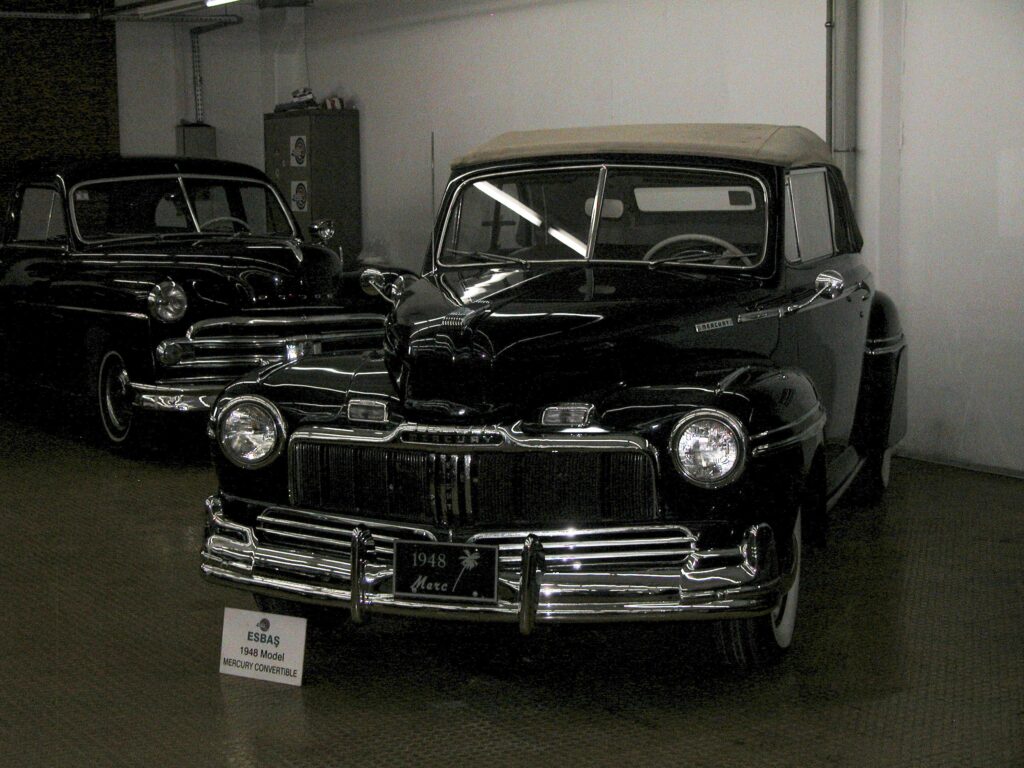
For the surfers of the ’60s – the generation after mine – the iconic vehicle was the Woody station wagon, which was ideal for transporting surfboards to the beach. Typically they were late ’30s or ’40s Fords, but the Tuncer car collection boasted a much more exotic one, a 1932 Chevrolet, one that would inspire unrestrainable lust in the heart of any self-respecting surfer.
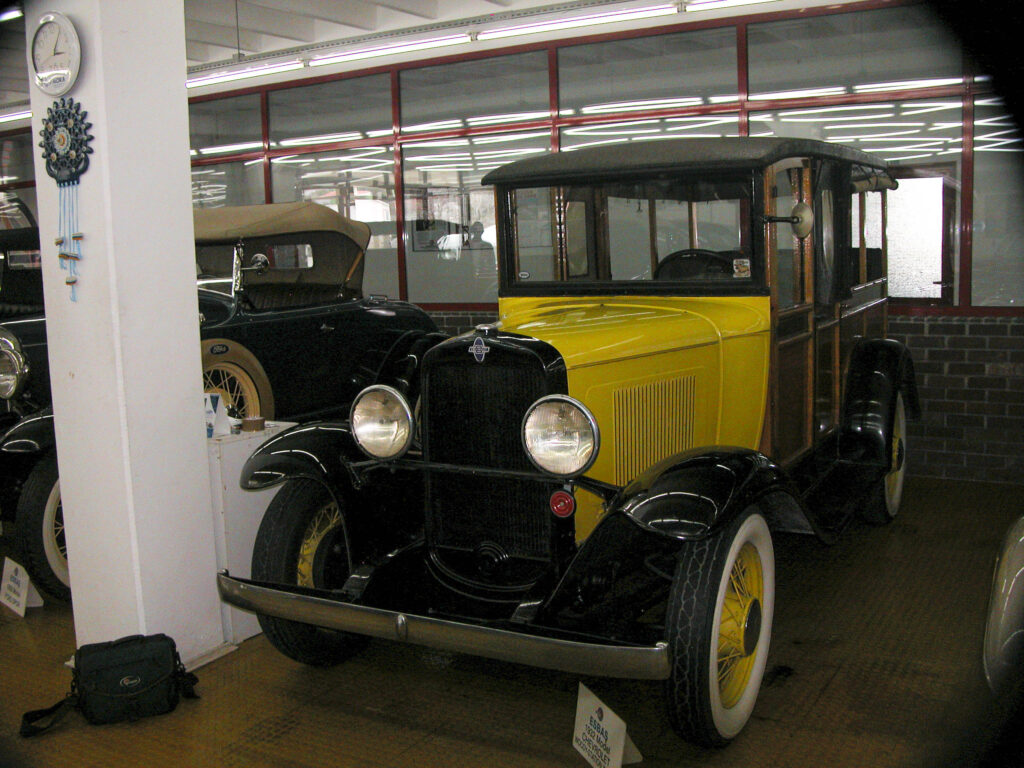
A departure from the usual fare of the museum was the 1957 BMW Isetta in the following photo, the result possibly of miscegenation between a motorcycle and a golf cart. These days it seems incredible that BMW would ever make such a car, but in the early post-WW-II years automobile ownership was an exotic and expensive luxury for most Europeans and there was plenty of demand for minimal, inexpensive, high-mileage cars (the Isetta got 78 mpg). The Isetta actually originated in Italy in 1953 with a company called Iso (hence the diminutive “Isetta”) and was made there, in France, Spain and South America before BMW acquired the marque. The Isetta had a one-cylinder 12-horsepower motorcycle engine, seated two plus one small child if squeezed hard, and the only door was at the front – actually it was the front – of the vehicle. It was derisively known in US sports-car circles as “The Egg” and more affectionately in Europe as the “Bubble Car.” It had a top speed of 47 miles per hour and took 30 seconds to get from zero to 30 mph. BMW ceased production in 1962 after 161,728 units had been sold. In 1957 a BMW Isetta sold for $1,048; today you would have to fork over $45,000 to $55,000 for an Isetta in top condition, like the one in the Tuncer collection.
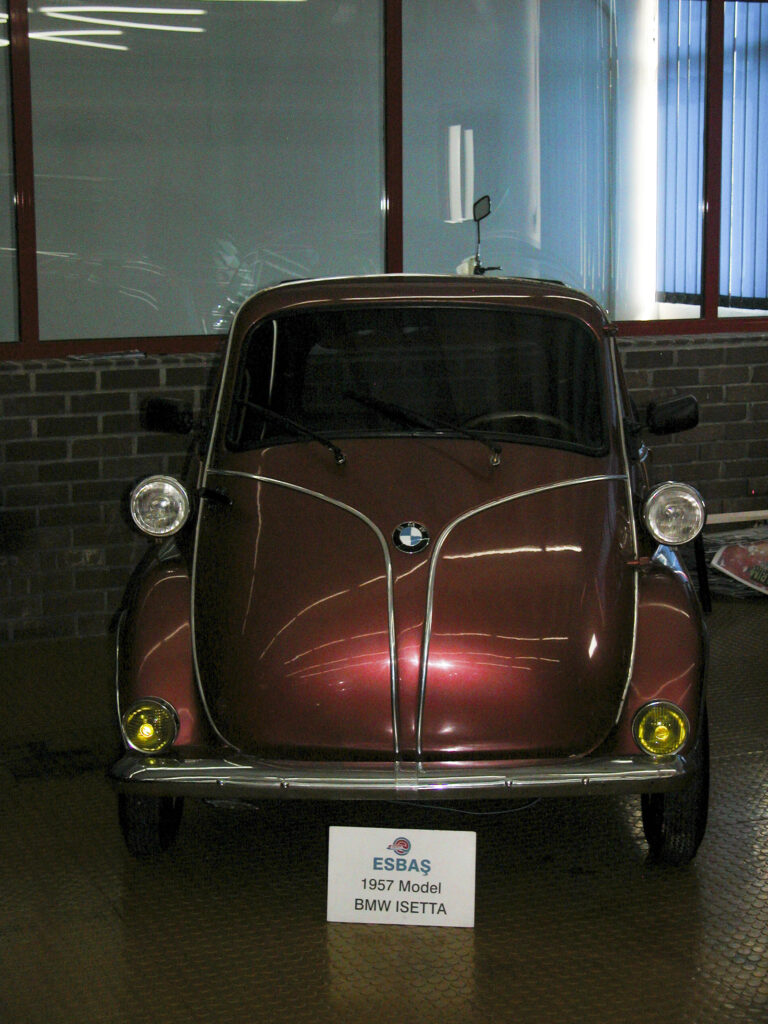
A more upscale vehicle was the 1937 Packard sedan shown in the following photo. At one time, during the late 1920s, Packard was the top-selling brand among American luxury cars, and enjoyed a worldwide reputation for quality, exporting more cars than any other in its price class. The company’s slogan, “Ask the Man who Owns One,” was a byword at home and abroad – you could ask the Tsar of Russia and Emperor of Japan about their Packards, for example. During the 1930s, buoyed by the support structure of their parent organizations GM and Ford, Cadillac and Lincoln began to catch up, but Packard remained strong until after World War II, when a series of poor business and engineering decisions, among other problems, led to its gradual decline and demise.
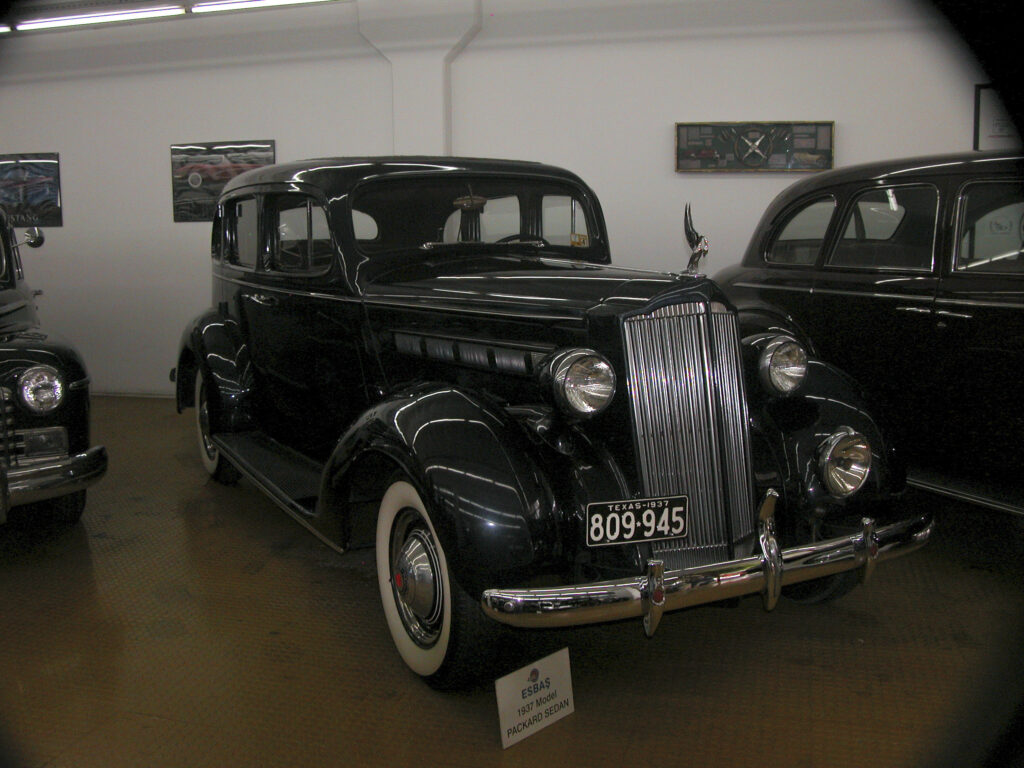
The Tuncer collection also included a 1940 Cadillac LaSalle. The LaSalle was kind of a junior Cadillac, built and marketed by Cadillac but marketed as a separate brand, and priced lower than a regular Cadillac. LaSalles were built from 1927 to 1940, so the car in the picture below is one of the last LaSalles ever built. GM’s management killed the LaSalle in 1941 because they had begun to see it as a superfluous sibling of Cadillac and Buick, overlapping the market positions of both and stealing sales from them.
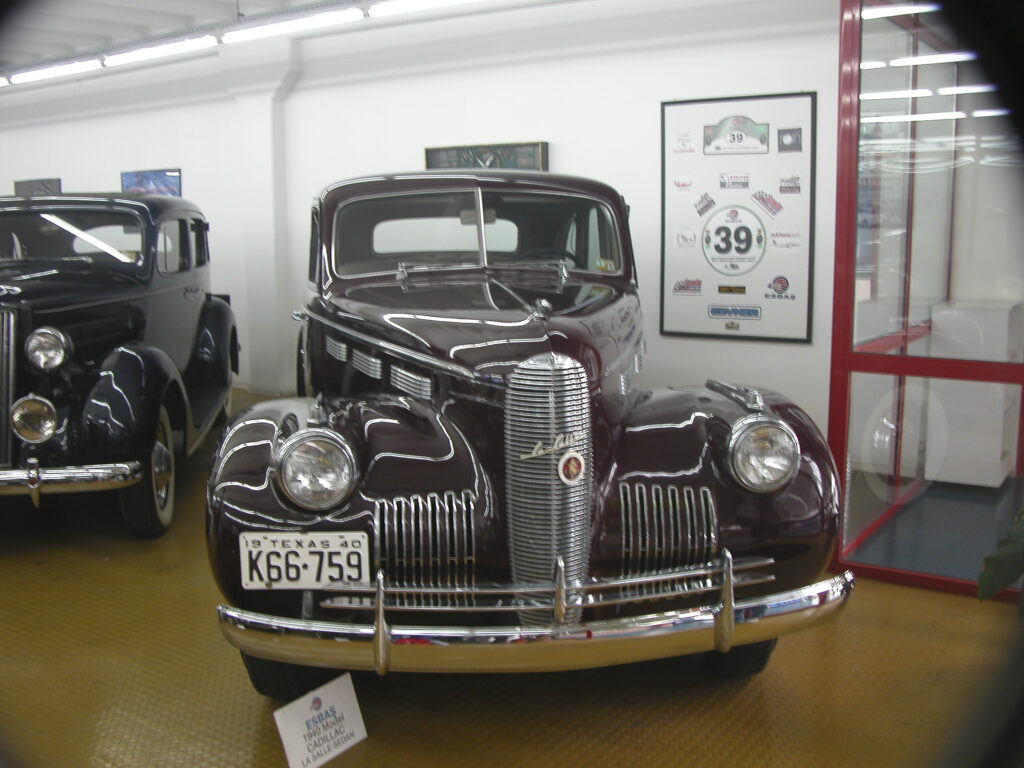
The ’40 LaSalle 4-door sedan closely resembled a car I used to own, a 1940 Buick. It originally had a straight-8 engine, but it threw a rod, and the car was then acquired by the master mechanic and engineer extraordinaire Steve Stephenson, who dropped a 55 Buick V-8 into it before selling it to me for $150. I owned it during my last year in college, along with a Honda 305 Super Hawk motorcycle. I had it painted Honduras maroon metallic (a bad choice; Steve suggested a dark brown, which would have been far more appropriate for such a dignified automobile) and had it upholstered in Tijuana with black tuck-and-roll vinyl. After graduating from college, I went into the Navy and sold the car back to Steve.
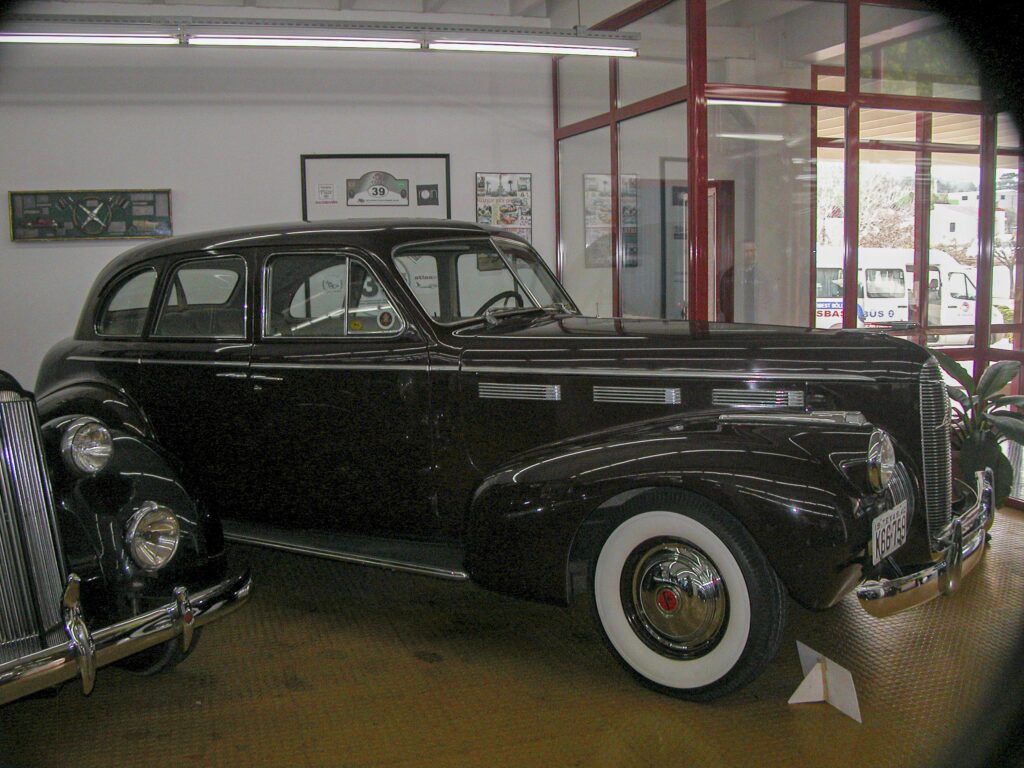
One summer night I was driving the Buick down Second Street in Belmont Shore, Long Beach, when some tough-looking dudes in an old Chevy pulled up alongside. They started shouting insults at me and following me as I drove down Second Street through Naples and turned right on Pacific Coast Highway toward Seal Beach. As I was driving down PCH they pulled up alongside and threw a full beer can at my car, which put a chip in the right rear windshield. At that point I slowed down, pulled behind them as if I were getting their license plate number, then shot around them on the left, took the Buick up to 75 mph and left the Chevy far behind in my rear view mirror as I rocketed toward Huntington Beach.
